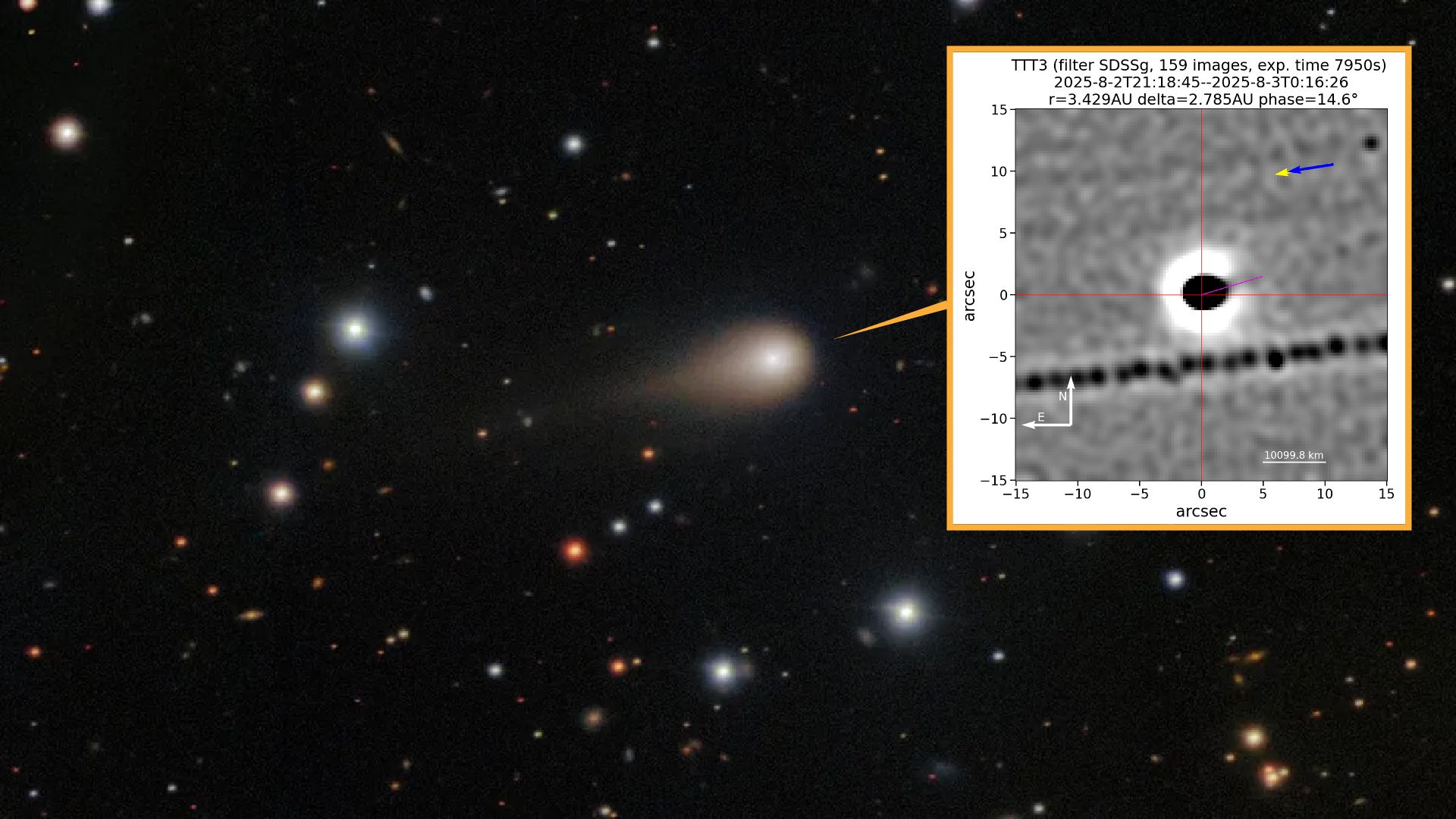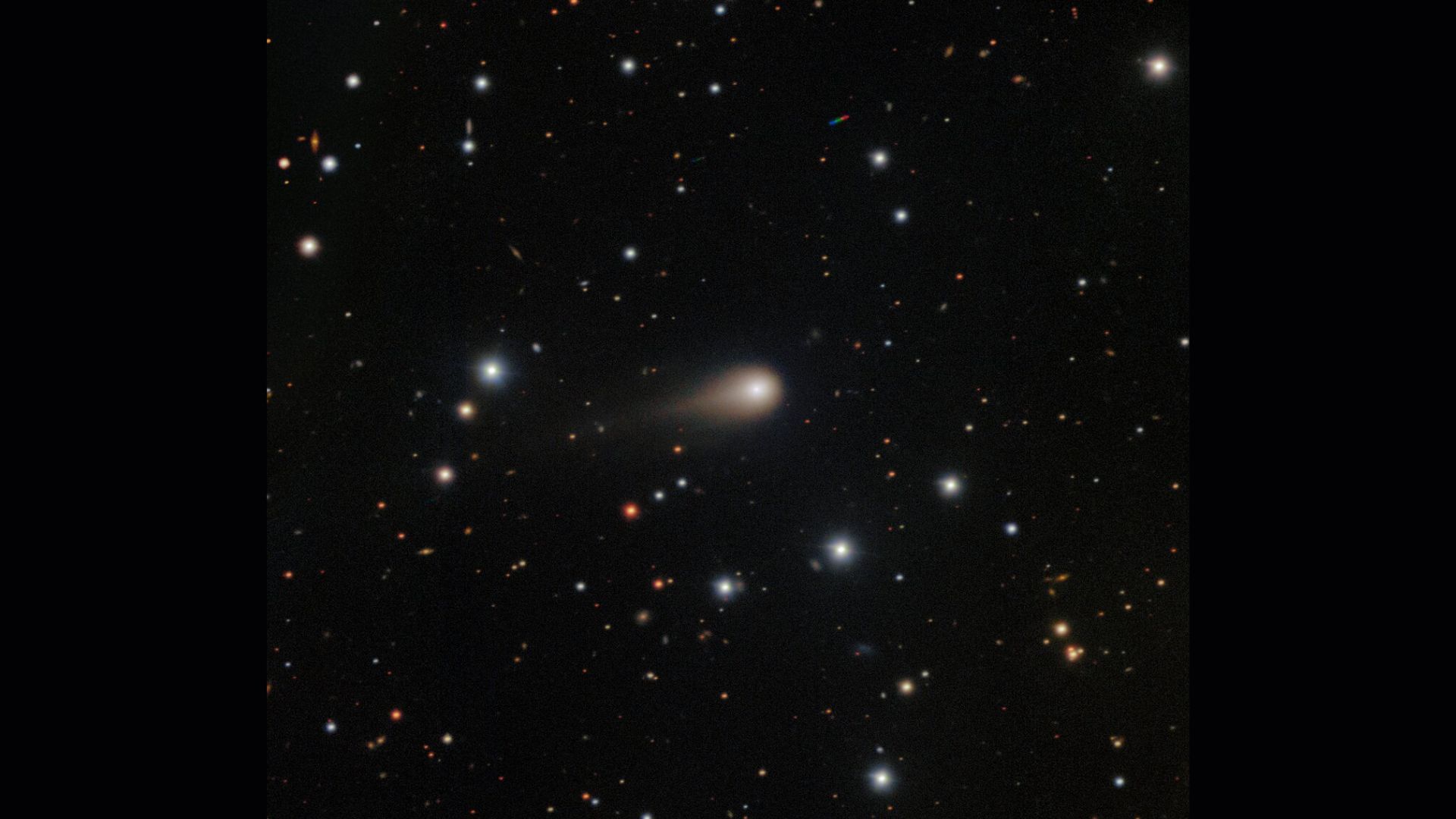Exploring the vastness of space often reveals fascinating and mysterious phenomena, such as the recent discoveries surrounding the interstellar comet 3I/ATLAS. Comets, in general, are captivating cosmic bodies that have long intrigued scientists due to their unique characteristics and the valuable insights they offer into the history of our solar system and beyond.
Comets are essentially pristine time capsules, preserving material from their formation billions of years ago. They hold critical information about the early stages of the universe, making them invaluable for scientific study. Interstellar comets, such as 3I/ATLAS, whose origins lie outside our solar system, offer an even more tantalizing opportunity to delve into the secrets of distant star systems.
The concept of comets acting as windows into the past is particularly relevant in the case of 3I/ATLAS. Two European researchers, Samuel Grant and Geraint Jones, have harnessed advanced computer modeling to predict a unique event where the Europa Clipper spacecraft could intercept charged particles from 3I/ATLAS's ion tail. This unprecedented alignment presents a rare chance to directly sample material from an interstellar comet, shedding light on its composition and origin.
However, as exciting as this prospect is, various challenges loom over this scientific endeavor. The persistence of the U.S. government shutdown poses a significant obstacle, potentially hindering the activation of crucial instruments on Europa Clipper that are essential for capturing these charged particles. The window of opportunity for this cosmic rendezvous falls between Oct. 30 and Nov. 6, adding urgency to the situation.
Grant and Jones, instrumental in predicting this ion tail crossing, highlight the significance of distinguishing between solar wind ions and those derived from the comet. Their meticulous calculations and observations underscore the complexity of studying such cosmic phenomena and emphasize the need for precise instrumentation and data interpretation.
Beyond the immediate research implications, the unfolding events surrounding 3I/ATLAS underscore the broader implications of investigating interstellar objects. Avi Loeb's comprehensive analysis, advocating coordinated global scientific efforts in studying 3I/ATLAS, brings attention to the potential significance of these celestial visitors. The unique qualities exhibited by the comet raise intriguing questions about its origins and nature, prompting a dedicated campaign by the International Asteroid Warning Network cIAWNc to enhance astrometric measurements and deepen our understanding of such interstellar entities.
The evolving narrative surrounding 3I/ATLAS encapsulates the essence of space exploration – a quest for knowledge, potential surprises, and the continual unraveling of the universe's mysteries. As researchers and spacecraft alike endeavor to intercept, observe, and analyze this enigmatic comet, the scientific community remains poised to unlock new insights into the cosmic tableau that surrounds us.
In the grand tapestry of the cosmos, each celestial visitor, like 3I/ATLAS, offers a glimpse into the past, present, and future of our universe. As humanity navigates the vast expanse of space, these cosmic encounters fuel our curiosity, inspire innovation, and deepen our appreciation of the wonders that lie beyond our terrestrial confines.
With each new discovery, the infinite reaches of space beckon us to explore, learn, and embrace the unknown. As we witness the unfolding saga of 3I/ATLAS and its cosmic journey, we are reminded of the boundless opportunities that await us in the ever-expanding frontier of space exploration.


